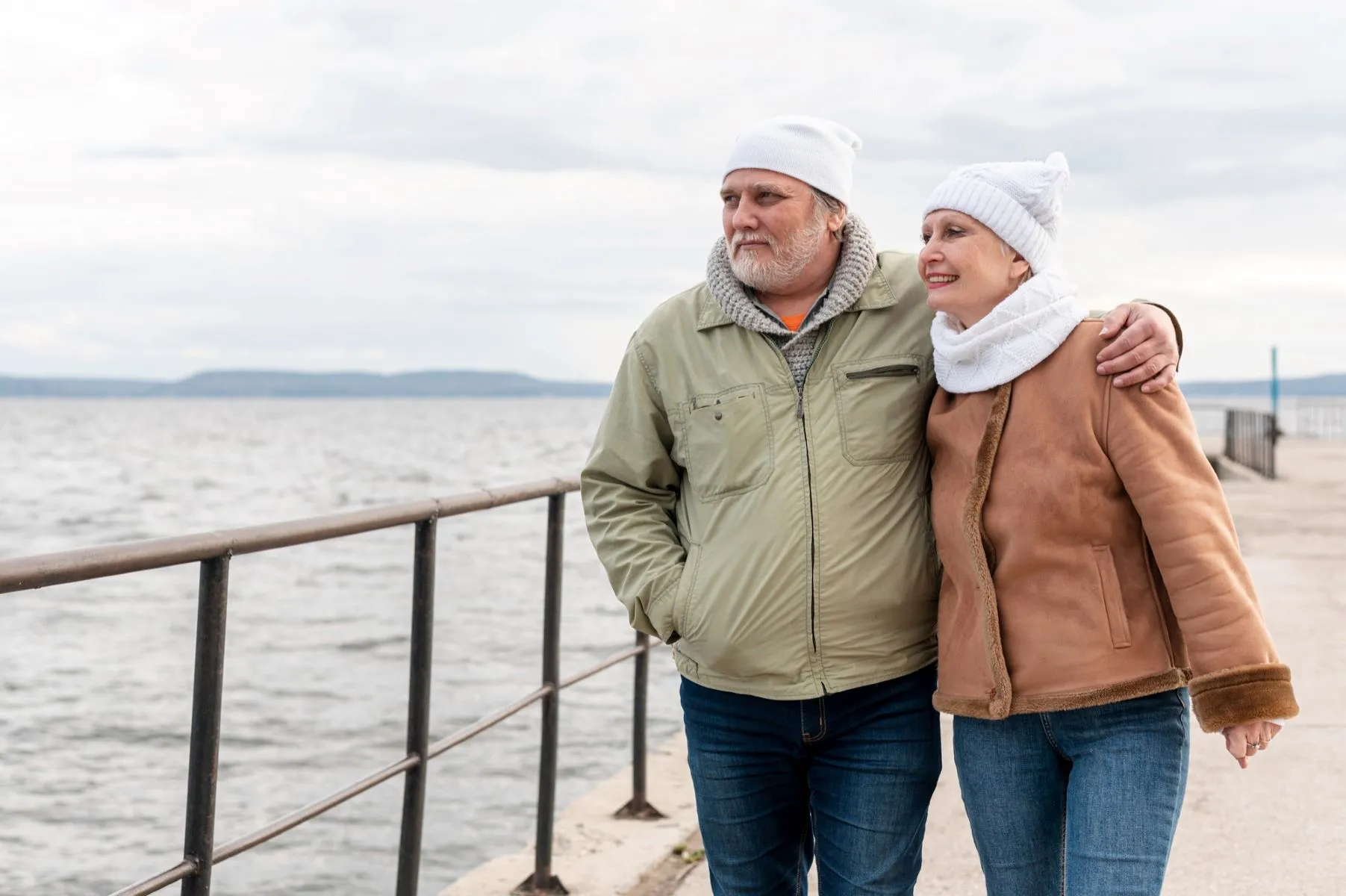Introduction:
With its frosty landscapes and cozy festivities, winter brings unique challenges for elderly care and safety in the cold. As temperatures drop, so does the well-being of our aging population. It is crucial for general readers, caregivers, and healthcare professionals to be aware of the specific issues that winter poses to the elderly and to understand effective safety measures. In this comprehensive article, titled “Elderly Care and Safety in the Cold,” we will delve into the challenges faced by the elderly during the winter season, discuss safety measures to protect them, and provide guidance for caregivers and healthcare professionals.
Challenges Faced by the Elderly in Winter:
- Cold-Related Health Issues:
The winter season can exacerbate pre-existing health conditions in the elderly, such as arthritis and respiratory problems. Cold temperatures can constrict blood vessels, leading to an increased risk of heart attacks and other cardiovascular issues. According to the World Health Organization, cold weather is responsible for a significant number of excess winter deaths, with the elderly being the most vulnerable group. - Isolation and Mental Health:
Winter often brings isolation, as seniors may hesitate to venture outside in inclement weather. The lack of sunlight, commonly associated with seasonal affective disorder (SAD), can also contribute to depression and anxiety. Caregivers and healthcare professionals need to address the mental health aspects of winter among the elderly. - Accidents and Falls:
Slippery sidewalks and icy driveways pose a significant threat to the elderly. Falls are a leading cause of injury among seniors, and the risk increases during the winter. According to the Centers for Disease Control and Prevention (CDC), one out of four older adults falls each year, resulting in serious injuries, fractures, or even fatalities.
Safety Measures for Winter:
Maintaining warmth and comfort:
- Ensure that the elderly have access to warm clothing, including layers, hats, gloves, and insulated footwear.
- Keep living spaces adequately heated and use additional heating devices, like space heaters, with caution to prevent accidents.
Preventing Cold-Related Health Issues:
- Encourage regular physical activity indoors to promote circulation and warmth.
- Schedule routine check-ups with healthcare professionals to monitor and manage chronic conditions.
Minimizing Isolation:
- Facilitate social engagement through virtual platforms, phone calls, or arranging visits when weather permits.
- Encourage participation in indoor activities and hobbies to alleviate feelings of loneliness.
Fall Prevention:
- Keep walkways clear of snow and ice, using salt or sand to improve traction.
- Ensure proper lighting both inside and outside the home, reducing the risk of tripping.

Guidance for Caregivers and Healthcare Professionals:
Regular health monitoring:
- Conduct regular health check-ups to monitor any changes in physical or mental health.
- Adjust medications as necessary, considering the impact of colder weather on the body’s response to certain drugs.
Educating on Winter Safety:
- Provide caregivers and seniors with educational resources on winter safety, emphasizing the importance of preparation and awareness.
- Collaborate with community organizations to conduct workshops on winter safety for the elderly.
Creating support networks:
- Encourage the formation of local community support groups for caregivers, fostering a network for sharing experiences and resources.
- Facilitate communication between healthcare professionals, caregivers, and support groups to ensure a comprehensive approach to elderly care during the winter.
Emergency Preparedness:
- Equip caregivers and healthcare professionals with information on emergency procedures, such as power outages or extreme weather events.
- Develop emergency plans that include alternative heating sources, transportation options, and communication strategies.
Expert Quotes:
To emphasize the importance of winter safety for the elderly, Dr. Sarah Thompson, a geriatric specialist, shares her insights: “Cold weather can significantly impact the health of older adults. Caregivers and healthcare professionals must address not only the physical but also the mental well-being of seniors during the winter months. Regular check-ups and proactive measures can go a long way in ensuring their safety and comfort.
Advocacy and Community Involvement:
Beyond individual efforts, advocating for the elderly at a community level is crucial. Local governments and community organizations should actively work to create policies and programs that address the unique challenges faced by seniors during the winter. This could include subsidizing heating costs for low-income seniors, organizing transportation services during extreme weather events, and establishing community centers as warm, safe spaces for social interaction.
Dr. James Rodriguez, a public health expert, emphasizes the importance of community involvement: “Elderly Care and Safety in the Cold is not solely an individual responsibility but a collective one. Communities must come together to ensure that our elderly population is supported and protected during the colder months.”
Technological Solutions for Remote Monitoring:
In an age of technological advancement, remote monitoring can be a game-changer for elderly care during the winter. Wearable devices and smart home technologies can provide real-time data on a senior’s health and well-being. This information can be invaluable for healthcare professionals and caregivers, allowing them to intervene promptly in cases of emergencies or changes in health conditions.

Financial Assistance Programs:
Elderly individuals on fixed incomes may struggle with increased heating costs during the winter. Governments and non-profit organizations should explore and expand financial assistance programs to alleviate this burden. This could involve subsidizing heating bills, providing grants for home insulation, or distributing vouchers for warm clothing.
Statistics from the National Council on Aging reveal that a significant portion of the elderly population sacrifices necessary medical care to afford heating during the winter. By addressing these financial challenges, we can ensure that seniors don’t have to compromise their health and well-being.
Cultural Sensitivity in Care:
It’s essential to acknowledge the diversity within the elderly population. Cultural differences can influence perceptions of health, safety, and acceptable care practices. Healthcare professionals and caregivers must be culturally sensitive in their approach, tailoring winter safety strategies to the unique needs and beliefs of each individual.
For instance, some communities may have specific traditional practices for staying warm or managing winter-related challenges. By incorporating cultural competence into care plans, healthcare professionals can foster trust and better address the diverse needs of the elderly population.

Sustainable Initiatives for Winter Elderly Care:
In addition to immediate safety measures, it’s crucial to consider long-term, sustainable initiatives that can enhance the quality of elderly care and safety in the cold. This involves a holistic approach that addresses environmental factors, community resilience, and the overall well-being of the aging population.
Green Spaces and Elderly-Friendly Urban Planning:
Urban planners should prioritize the creation and maintenance of accessible green spaces designed to accommodate the needs of the elderly. These spaces can serve as safe havens during the winter, promoting outdoor activities, social interactions, and exposure to natural light—all essential elements for physical and mental well-being.
Integrating benches, well-lit paths, and shelters in these areas can enhance their usability, making them conducive for seniors to enjoy the outdoors even in colder weather.
Public Transportation Accessibility:
Many seniors face challenges in commuting, particularly during the winter when mobility is further restricted. Investing in accessible and reliable public transportation services can significantly impact their ability to remain active and engaged in the community.
Moreover, initiatives like free or discounted transportation for seniors during extreme weather conditions can ensure they have the means to reach essential services and maintain social connections.
Community-Based Resilience Programs:
Establishing community-driven resilience programs is essential for supporting the elderly during winter emergencies. These programs can involve training volunteers, creating emergency response teams, and ensuring that seniors have access to essential supplies during severe weather events. Collaborating with local businesses, NGOs, and government agencies can strengthen these initiatives, fostering a sense of community and shared responsibility.
The Role of Telehealth in Winter Elderly Care:
The advent of telehealth services has revolutionized healthcare delivery, especially during challenging weather conditions. Telehealth allows healthcare professionals to conduct virtual check-ups, monitor chronic conditions, and provide medical advice without the need for seniors to venture outside in harsh weather.
This technology not only enhances the safety of elderly individuals but also facilitates timely medical interventions, reducing the risk of complications associated with winter-related health issues.
Collaborative Research and Development:
Encouraging research and development initiatives focused on winter elderly care can lead to innovative solutions. This includes the development of advanced heating technologies, wearable devices specifically designed for seniors, and improved materials for winter clothing.
Collaboration between scientists, engineers, healthcare professionals, and caregivers can drive the creation of products and services that address the unique challenges faced by the elderly during the winter months.

Conclusion:
Winter brings both beauty and challenges, especially for the elderly. By understanding the specific issues they face and implementing proactive safety measures, we can create an environment that promotes well-being and comfort. Caregivers and healthcare professionals play a pivotal role in ensuring the winter months are not only festive but also safe for our aging population. Through education, support networks, and emergency preparedness, we can navigate winter successfully, providing the care and safety our elderly loved ones deserve.



